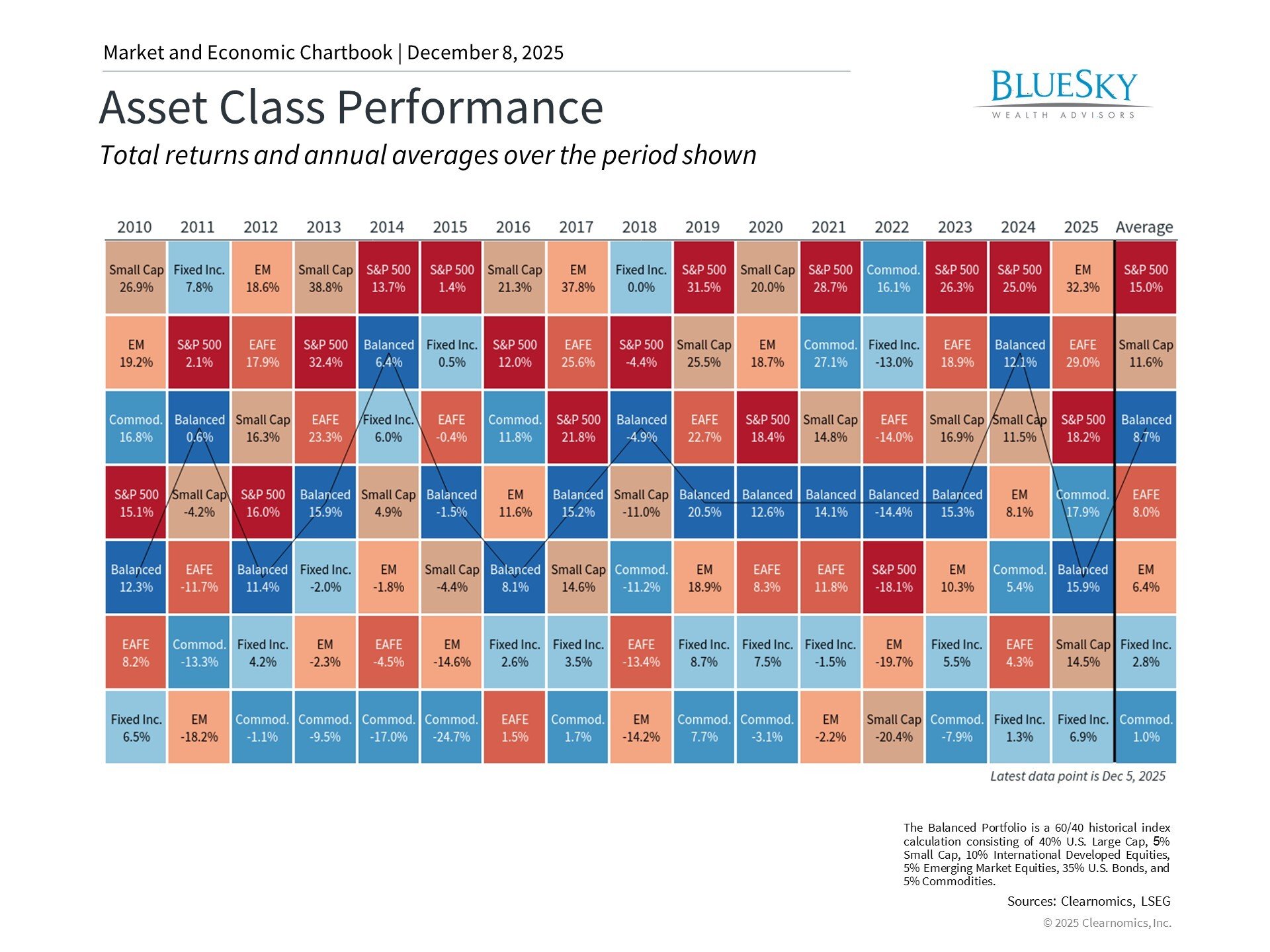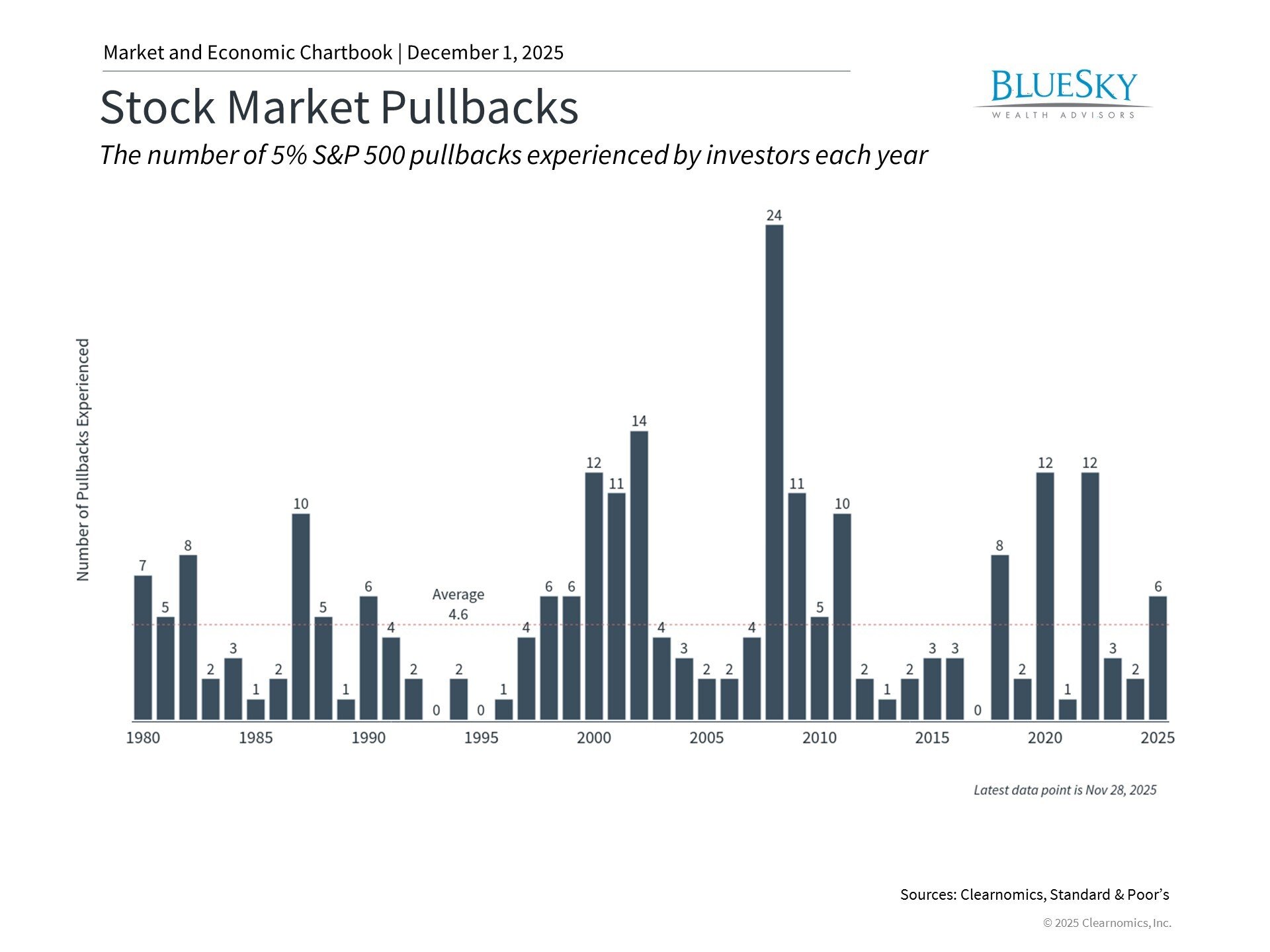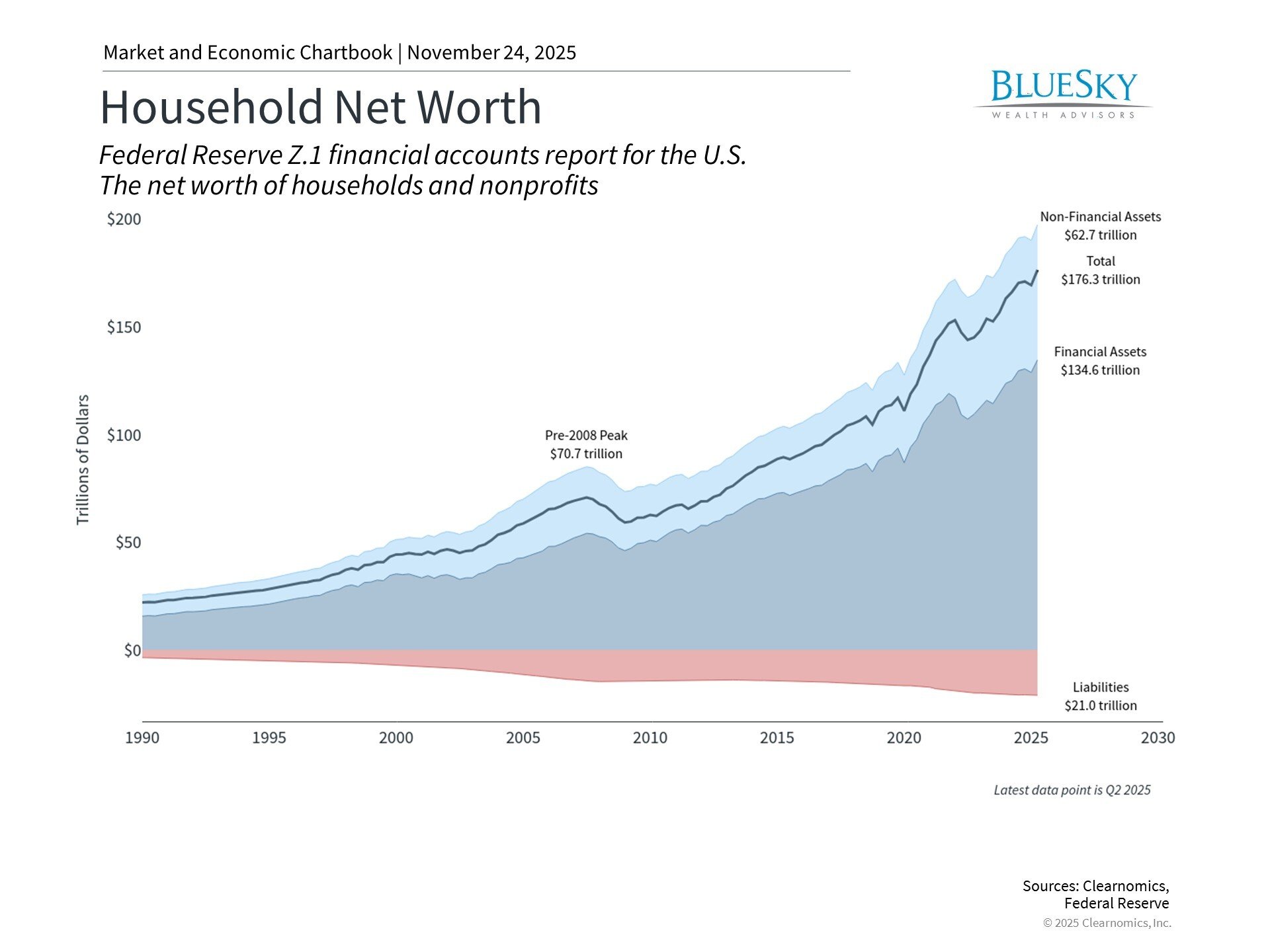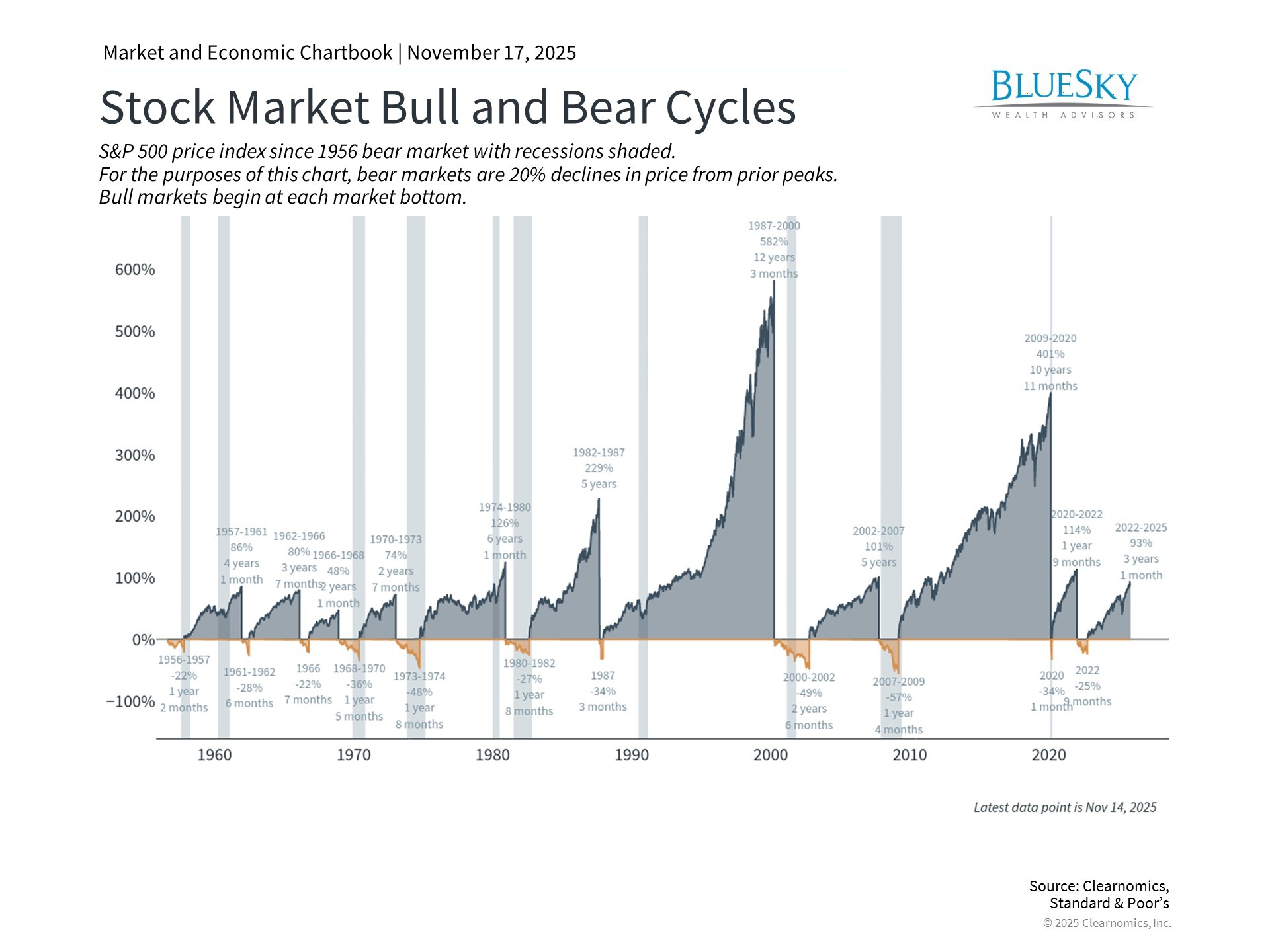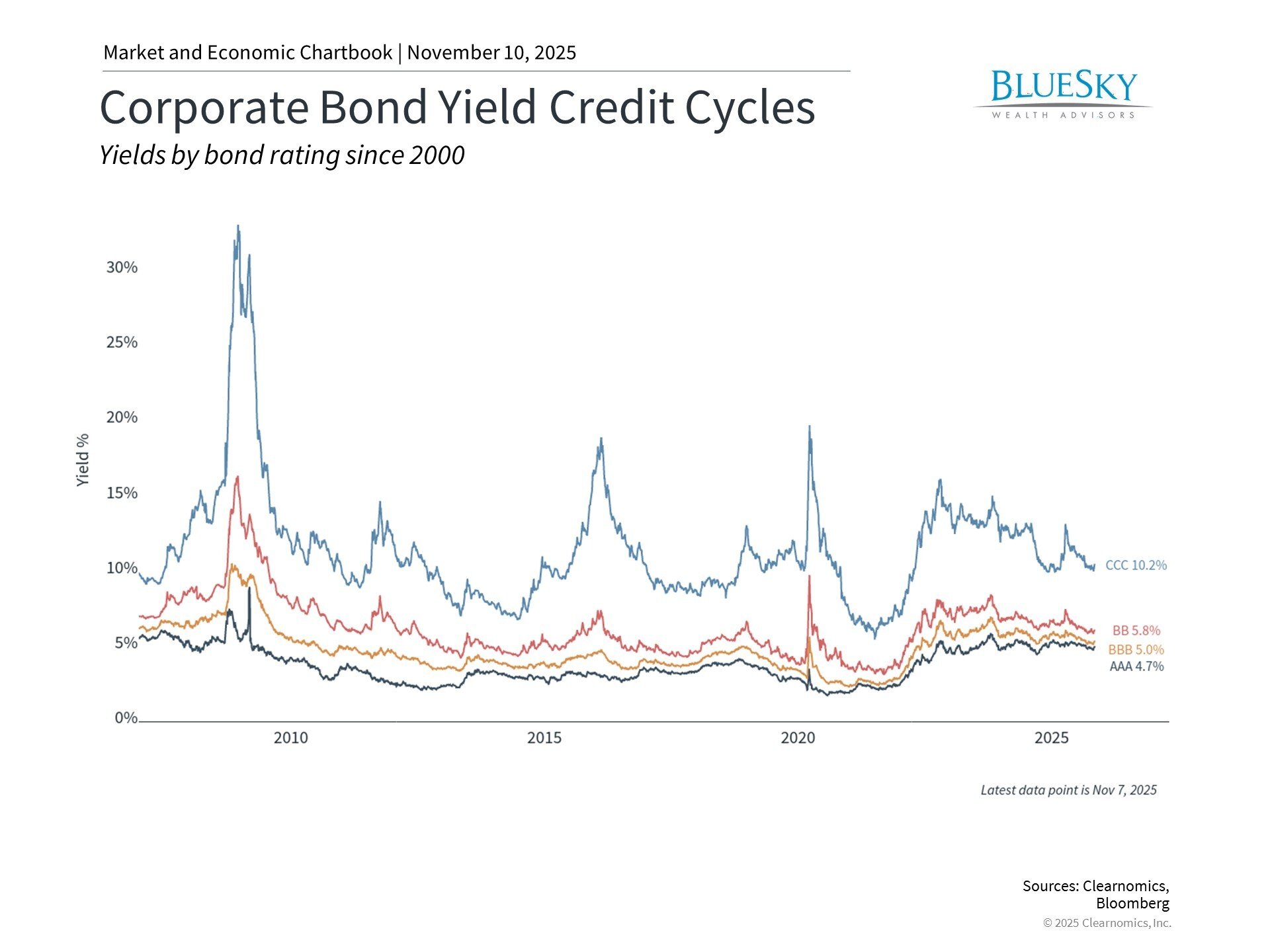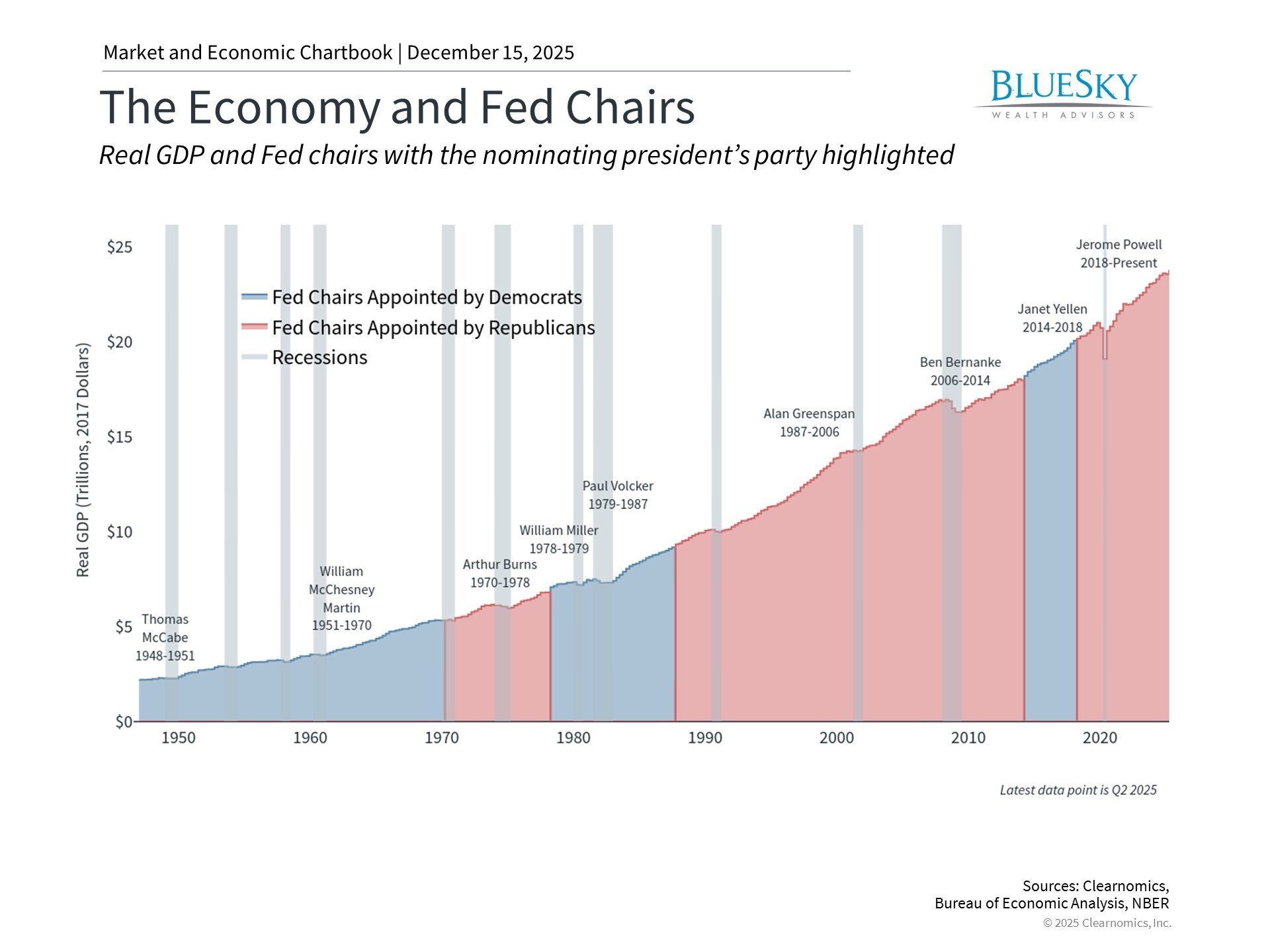
Managing Investment Anxiety During Market Highs
Managing Investment Anxiety During Market Highs

With equity markets hitting record levels and technology sectors maintaining strong momentum, many investors wonder whether current conditions signal an unsustainable market environment. These concerns reflect both market dynamics and investor sentiment. However, excessive focus on bubble fears may drive portfolio decisions that emphasize market timing over strategic long-term planning.
Defining what constitutes a market "bubble" proves challenging despite frequent use of the term in financial discussions. Markets naturally fluctuate through cycles, with risk perception shifting over time. Historical examples like the dot-com surge of the late 1990s and housing expansion of the mid-2000s represent clear instances, yet numerous other periods of investor concern failed to materialize into significant corrections. Following the 2008 financial crisis, persistent bubble warnings coincided with what became history's longest bull market run.
The question of bubble existence differs from whether markets might experience corrections. Recent years demonstrate that temporary market declines occur regularly and unpredictably. Earlier this year, the S&P 500 dropped 19% before recovering within three months. Investors attempting market timing during such periods often remained sidelined during the subsequent rebound.
Despite periodic challenges, equity markets have generated substantial long-term gains throughout history. In today's uncertain climate, how can investors maintain focus on constructing portfolios that align with their financial objectives?
Current valuations appear elevated with several considerations

Understanding the difference between temporary corrections and bubble concerns requires examining value concepts. Investment success depends not only on price paid but on the underlying worth received. Investors purchase equities to own business interests and their associated cash flows. Metrics like price-to-sales and price-to-earnings ratios reveal both share prices and the value proposition they represent.
The chart displays the Shiller price-to-earnings ratio, offering perspective on long-term valuation trends through inflation-adjusted earnings over ten years. Today's level of 38x means investors pay $38 for each dollar of historical earnings, significantly above the 27x average. This metric has varied recently as markets have addressed inflation concerns, policy changes, and technology sector volatility.
While numerous indicators suggest historically expensive market conditions, several important considerations emerge. Valuations rarely provide reliable short-term return predictions. Rather, they reflect investor willingness to pay based on future expectations. Markets can continue advancing for extended periods when business fundamentals remain solid, even when appearing overvalued. This dynamic explains why market timing often proves counterproductive.
Additionally, while similarities exist between current conditions and the 1990s technology boom through high valuations and emerging technology excitement, key differences exist. Unlike the unprofitable dot-com era companies, today's market leaders demonstrate established operations, solid profitability, and strong financial positions. Just as the information technology revolution eventually benefited diverse company types over decades, artificial intelligence developments could provide similar broad benefits.
Furthermore, not every bubble "bursts." While valuations may normalize through price declines, they can also improve when earnings and fundamentals strengthen. Current market enthusiasm partly anticipates enhanced future earnings. Recent quarters have seen corporate performance validate some expectations through stronger-than-anticipated earnings growth.
Investment opportunities span multiple styles and market segments

Though broad market valuations appear stretched, other segments offer more appealing opportunities. The chart demonstrates that Large Cap Growth stocks carry the highest price-to-earnings ratio at 28x. Alternative market segments, including Large Value and Small Caps, present more attractive valuations while maintaining solid earnings expansion.
This pattern extends across market sectors. Artificial intelligence-focused companies concentrate primarily in Information Technology, Communication Services, and Consumer Discretionary sectors. Recent quarters have shown positive momentum spreading to other sectors with more reasonable valuations, including Financials, Industrials, and others.
Incorporating diverse sizes, styles, and sectors within portfolios helps minimize "concentration risk" while potentially improving overall holding valuations for better risk management. Predicting which market areas will outperform during specific periods remains difficult, making appropriate diversification valuable for portfolio balance.
Time continues as a fundamental investment advantage

Market history's most significant lesson shows that time generally rewards patient investors, including those investing during high valuation periods. The chart illustrates how major market events appear less severe when viewed across years and decades - timeframes appropriate for many investment objectives. Both technology and housing market disruptions, while challenging during occurrence, eventually recovered as markets reached new peaks.
This highlights the importance of both portfolio construction and investment approaches that leverage extended timeframes, such as dollar cost averaging. Even investors who entered markets at historically poor timing, like the 1929 peak preceding the Great Depression, eventually achieved positive returns. While starting during lower valuations typically generates superior returns, this advantage decreases over longer investment horizons.
Bubble concerns have intensified as markets continue reaching record highs and technology stocks grow in prominence. Rather than concentrating on short-term market implications, investors should consider historical lessons and their impact on long-term portfolio strategies.
The bottom line? Current market valuations reflect elevated levels driven by robust earnings and solid business fundamentals. Success requires maintaining diversified portfolios that capture growth opportunities while managing risk effectively, ideally with professional guidance.
BlueSky Disclosures
Copyright (c) 2025 Clearnomics, Inc. All rights reserved. The information contained herein has been obtained from sources believed to be reliable, but is not necessarily complete and its accuracy cannot be guaranteed. No representation or warranty, express or implied, is made as to the fairness, accuracy, completeness, or correctness of the information and opinions contained herein. The views and the other information provided are subject to change without notice. All reports posted on or via www.clearnomics.com or any affiliated websites, applications, or services are issued without regard to the specific investment objectives, financial situation, or particular needs of any specific recipient and are not to be construed as a solicitation or an offer to buy or sell any securities or related financial instruments. Past performance is not necessarily a guide to future results. Company fundamentals and earnings may be mentioned occasionally, but should not be construed as a recommendation to buy, sell, or hold the company's stock. Predictions, forecasts, and estimates for any and all markets should not be construed as recommendations to buy, sell, or hold any security--including mutual funds, futures contracts, and exchange traded funds, or any similar instruments. The text, images, and other materials contained or displayed in this report are proprietary to Clearnomics, Inc. and constitute valuable intellectual property. All unauthorized reproduction or other use of material from Clearnomics, Inc. shall be deemed willful infringement(s) of this copyright and other proprietary and intellectual property rights, including but not limited to, rights of privacy. Clearnomics, Inc. expressly reserves all rights in connection with its intellectual property, including without limitation the right to block the transfer of its products and services and/or to track usage thereof, through electronic tracking technology, and all other lawful means, now known or hereafter devised. Clearnomics, Inc. reserves the right, without further notice, to pursue to the fullest extent allowed by the law any and all criminal and civil remedies for the violation of its rights.

